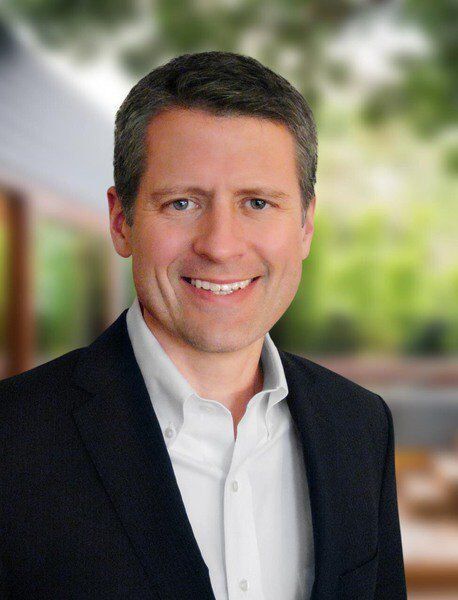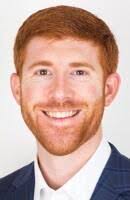FOWLER: How to be ‘Younger Next Year’
Published 12:00 pm Sunday, April 18, 2021

- Curt Fowler
“Just like moons and like suns, with the certainty of tides, just like hopes springing high, still I will rise.” – Maya Angelou
I’ve been told that our health is 75% up to us and 25% dumb luck. My goal is to do the best I can with my 75% and not worry about the other 25%.
Trending
I’m an older dad. I love my work. I love my family. I get to make a living doing work that I find fascinating and that I believe is God’s purpose for my work life. I then get to go home to the amazing family God has given me, to love my wife and raise my kids (my other purposes in life).
My plate is full and I love it. I’ve got a lot to accomplish before God calls me home so I must do my part to keep my body and mind going strong. I plan to be running this race for a very long time.
That is why I love the book “Younger Next Year” by Chris Crowley and Henry Lodge, M.D. Lodge was Crowley’s physician and introduced him to his “7 Rules” for aging well. I’ll take you through the seven rules so we can all work toward being (or at least feeling) younger next year.
Rule One: Exercise 6 Days Per Week (for the rest of your life)
This is a tough start to the rules considering how sedentary our society has become. According to Lodge, “In 20 years, failure to exercise six days a week will seem as self-destructive as smoking two packs of cigarettes per day.”
The authors call exercise swimming against the tide. After your mid-30s, the “tide” (life, genetics, etc.) wants to make you fat and dumb and it is coming after you seven days per week. You need to push against it for at least six of the days.
Trending
As Les Brown says, “Life is a battle for territory.” We’ve got to see exercise as our offensive weapon against fat and dumb.
How much exercise is enough? The authors want you to do 60 minutes, but every bit counts and just might turn into a habit. The American Heart Association recommends 150 minutes of “moderate-intensity” aerobic activity or 75 minutes of “vigorous” activity every week. Activities that get your heart rate up but still allow you to hold a conversation count as moderate. Vigorous means you are huffing and puffing and not able to hold a conversation.
Rule Two: Do Serious Aerobic Exercise 4 Days Per Week (for the rest of our life)
If the authors didn’t lose us on rule one, surely this one is over the edge! But, it turns out aerobic exercise fights off the most likely causes of death and aging. Aerobic exercise keeps our hearts and minds healthy. It pumps blood containing oxygen and nutrients to all the places we need it!
Aerobic exercise makes you sweat. Golf and doubles tennis do not count (not enough sweating). The authors call swimming, cross-country skiing, rowing, and biking “healing sports.” These sports leaving you feeling better afterward and have a much lower risk of injury. Bicycling is particularly great at building your leg muscles, which are very necessary to get up and down as we age.
The authors recommend a three-level approach to aerobic exercise that will require you to use a heart rate monitor. On the bright side, more and more watches have heart rate monitors built right into them. Here are the levels:
Level One: This is where you start. Try to get to 45 minutes of long and slow exercise at 60-65% of your maximum heart rate. At this level of intensity, you are breathing heavily but able to talk.
A good estimate of your max heart rate is 220 minus your age. If you are 50, your estimated max heart rate is 220-50 = 170. Your 60-65% range would be 102-111 beats per minute. Your goal is six days per week.
Level Two: Back your long and slow cardio down to four days per week and add two 45-minute sessions of weight training (we’ll get more into weight training later).
Level Three: Still stick with weight training two days per week but start to mix up your cardio. Try some cardio sessions at 70-85% of your max heart rate. Once you are feeling really good, you can try some interval work that will push your intensity level over 85% for brief periods.
Rule Three: Do Serious Strength Training 2 Days Per Week (for the rest of your life).
The “tide” we discussed earlier causes you to lose .3 to .5% of your bone mass every year after the age of 40. This is what turns us into little old people, bent over and ready to break a hip.
The “tide” wants to take away our muscle mass, too. Physically inactive people can lose as much as 3-5% of their muscle mass each decade after age 30.
This is a big deal. And as our bones and muscle go away so does our coordination. Lifting stuff requires neural coordination and strength. Training with weights (or our body weight) allows us to fight off muscle loss, bone loss and loss of coordination.
So, let’s get after it. Go to the gym. Hire a trainer if you must. There are plenty of other options available now through the internet like Peloton and streaming fitness courses. Find something you like and stick with it.
And don’t forget to work your legs. They are the most important thing we’ve got to get around. Do squats, lunges, whatever you can find to make sure you can get up, get down and stay upright for as long as possible!
The authors also tell a great story about a nursing home that started a strength training regime for its residents. The results were almost miraculous. People who were bed-bound moved to walkers. People on walkers were able to walk unassisted.
Weight training can reverse aging but it is way better to use weight training to fight it off. Defend your territory!
The Ugly Stick: This is not one of the seven rules, but a chapter I had to mention. It is a cold hard fact that as we get older, it is really easy to get uglier. Our teeth change colors, hair grows out of places it shouldn’t and we continue to wear the same clothes for far too many years. The authors have a lot of great recommendations to fend off the ugly stick. One of the best things you can do is have honest friends who will tell you what you look like. Seek their feedback. It is easy to miss this stuff as we get older!
Next week, we’ll finish off the rules. I don’t know about you but I feel the need to go do some cardio!
We love helping leaders build great businesses. If you’d like to learn more, you can check out our free resources at www.valuesdrivenresults.com/resource-library/ or give us a call at (229) 244-1559. We’d love to help you in any way we can.
Curt Fowler is president of Fowler & Company and director at Fowler, Holley, Rambo & Stalvey. He is dedicated to helping leaders build great organizations and better lives for themselves and the people they lead.
Curt and the team at FHRS help leaders build great companies through Virtual CFO, strategy, tax and accounting services.
Curt is a syndicated business writer, keynote speaker and business advisor. He has an MBA in Strategy and Entrepreneurship from the Kellogg School, is a CPA and a pretty good guy as defined by his wife and four children (No. 5 coming June 2021!).



